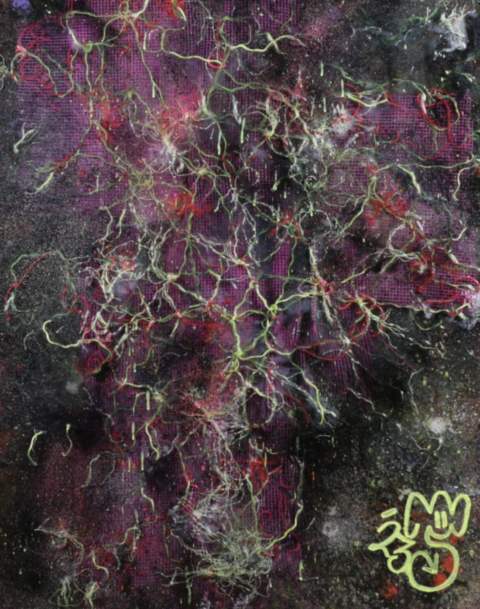Communion, 2023
80 x 105 cm, Mixed Media
Besides the social and ethnographic connotations of communion, which can often become dogmatic (and in worst cases oppressive), the existence of mycorrhizal networks can be thought to represent a kind of natural communion.
This mutually beneficial association between fungi and plant roots allows different species of plants to share vital nutrients and water with one another. They also share information about potential danger and environmental changes. (They even prioritise sharing with their own kin, just like humans!)
This symbiosis and mutual support across the plant kingdom reminds us of the importance of interdependence and cooperation within ecosystems. The fact that all plant life is joined together in some way, exchanging between one another, embodies the truest meaning of the term communion.
An awareness of this can foster a natural idea of our place within the cosmos, and can aid us in accepting all polarities found amongst ourselves. This can encourage a feeling that we are truly part of the whole; the purest intention of any spiritual practice.
By holding nature as sacred over dogmatic societal structures, everyone and everything becomes an interwoven and vital aspect of existence. This helps to shift our view of our own nature from the anthropocentrically bias, to a more naturalistic perspective.
❋
“Too often we hold fast to the clichés of our forebears. We subject all facts to a prefabricated set of interpretations. We enjoy the comfort of opinion without the discomfort of thought.

